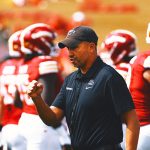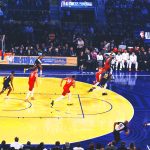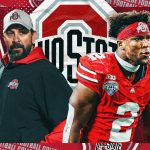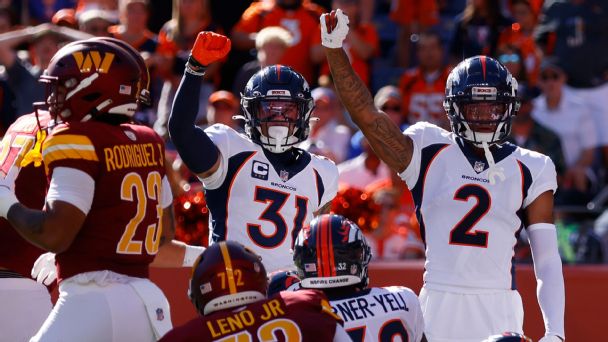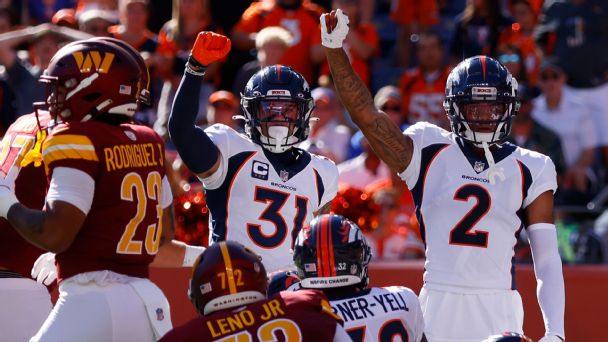
MIIAMI GARDENS, Fla. — The Denver Broncos will struggle to avoid an 0-3 start unless they can find a way to limit the Miami Dolphins’ speed among the team’s playmakers Sunday in Hard Rock Stadium.
“They have a lot of speed, it’s a track team,’’ Broncos defensive coordinator Vance Joseph said. “That receivers group … running backs… there’s a lot of speed out there.’’
Late Hall of Fame coach and Raiders owner Al Davis was once asked about his annual search for the fastest players and he said, “Speed is an integral part of fear.’’
Welcome to the 2023 Dolphins offense.
Wide receiver Tyreek Hill is arguably the fastest player in the league. The self-proclaimed Cheetah — who ran a 4.29 hand-timed 40-yard dash ahead of the 2016 draft — already has three touchdowns among his 16 receptions in two games this season and opened the year with a 215-yard effort against the Los Angeles Chargers.
“Obviously he has the speed,’’ Broncos cornerback Pat Surtain II said. “But his short area quickness is an issue [for defenses] too. The Dolphins do a good job of moving him around … studying the first couple weeks, that’s what I’ve been seeing, motioning him, getting him into areas to create success for the offense.’’
Dolphins wide receiver Jaylen Waddle, who was Surtain’s roommate at Alabama, was considered the fastest wide receiver in the 2021 draft. Waddle, who was in concussion protocol this week and didn’t practice Wednesday or Thursday, didn’t run in a pre-draft workout because he was recovering from a fractured ankle, but scouts said he had the best performances in the GPS tracking of any wide receiver on the board.
Dolphins running back Raheem Mostert, who popped a 43-yard touchdown run in Miami’s Sunday night win over New England, ran a 4.38 40-yard dash before he arrived in the NFL.
That’s fast, fast and more fast.
Add in quarterback Tua Tagovailoa, who currently leads the league in passing yards (715) and average gain per pass attempt (9.53 yards), and the Broncos will face an offense that not only has elite speed at the skill positions, but one with a quarterback who is successful at getting the ball to those players to inflict maximum damage.
“[It’s] challenging to get those guys stopped,’’ Joseph said. “ … So much speed everywhere, open-field tackling [is] going to be huge for us. If it’s 1-on-1 and they make one guy miss, it could be a 30-, 40-yard gain. Being great tacklers, keeping the big plays off of us, winning third downs.’’
The Patriots somewhat kept the lid on the Dolphins in Week 2 — Hill finished with five receptions for 40 yards and Miami’s only receiving touchdown in the game — with a zone-heavy look. The Patriots kept the safeties deep, forced the Dolphins to be patient and essentially took their chances when Miami’s offense got inside the 20 when there was less room for receivers to get behind defensive backs.
The Dolphins’ response was 30 rushing attempts (the same number of times Tagovailoa threw the ball) for 145 rushing yards. Mostert had 121 rushing yards and two touchdowns, including the 43-yard scoring run.
Six of the Dolphins’ seven touchdown drives on offense this season have taken fewer than five minutes in time of possession, four have been quicker than 2:08 and two have been six seconds each.
“Our pre-snap penalties are down, guys are moving fast out of the huddle in practice and it’s translating over to games,’’ Hill said this week. “Guys are knowing where to line up and stuff like that. It’s all translating over to the game. I feel like having the best offense, I feel like who wouldn’t want to be a part of that as a competitor?’’
The Broncos have struggled with holding their edges in run defense in their zeal to get up the field — something that has shown up in the success rate of screen passes against them as well. In the passing game, Surtain has been dominant, but offenses have largely chosen to go elsewhere because throwing into double coverage or a more crowded side of the formation is more productive than taking on Surtain.
For the Broncos, any defense plan starts with Hill.
“He’s extremely explosive — I would say there are two things that I never hear, but that I see on tape with him,’’ Payton said. “ … He’s savvy, he understands coverages, leverage. And the second thing is I would say he’s got outstanding stamina. He’s like next play, next play, all of a sudden there’s a go [route].’’
The Broncos defense also leads the league in penalties with 12 through two games.
After building a 21-3 lead in the second quarter of Week 2 against Washington, the Broncos drew a key defensive penalty in each of the Commanders’ last four touchdown drives. Each of those penalties came on second or third down with at least eight yards to go for a first down for the Commanders.
Payton called the third-down penalties “turnover penalties’’ because they kept drives going with automatic first downs when the Broncos had made a play to get off the field.
“We’re still coming together … learning what we like and don’t like and all of those little things,’’ linebacker Alex Singleton said. “Like everything, we’ve to got to improve … and if we get off the field on those third downs we’re not even talking about it [now].’’

